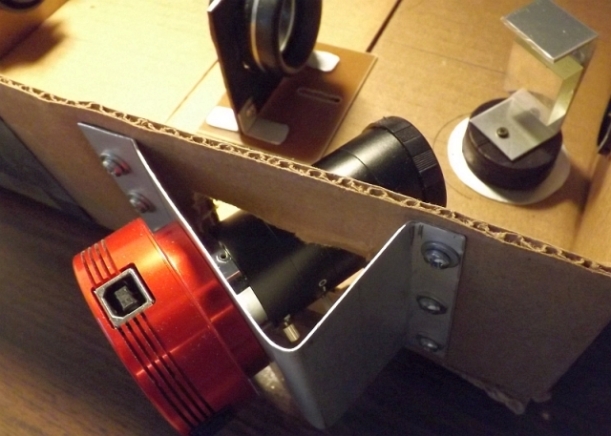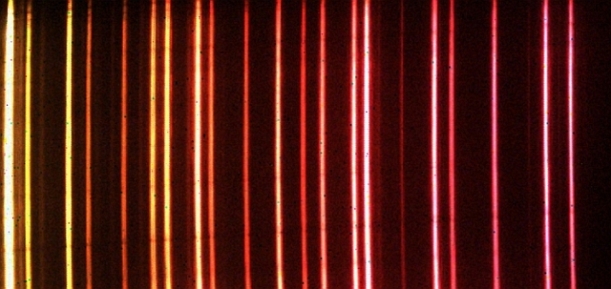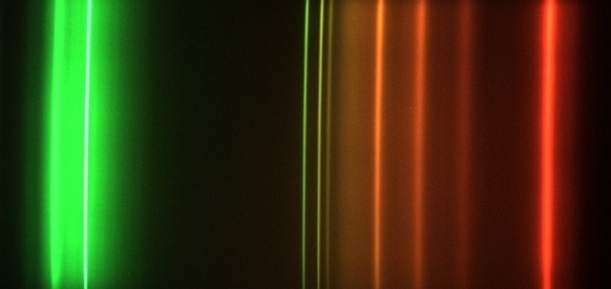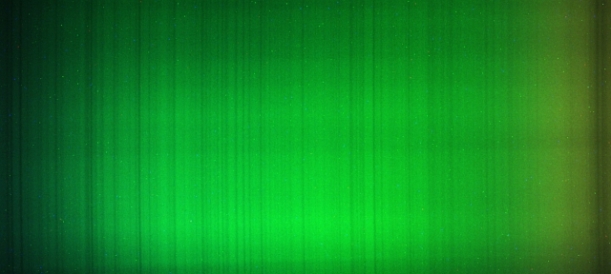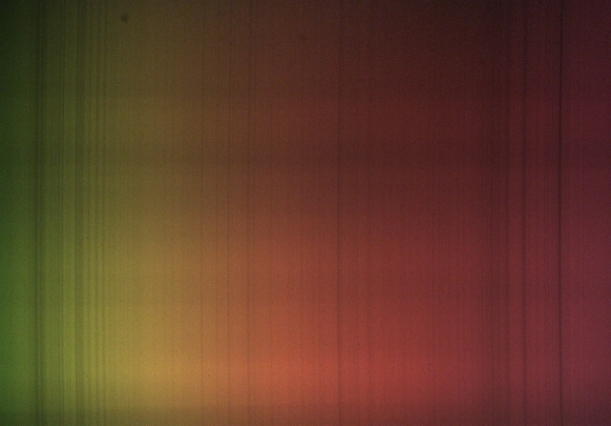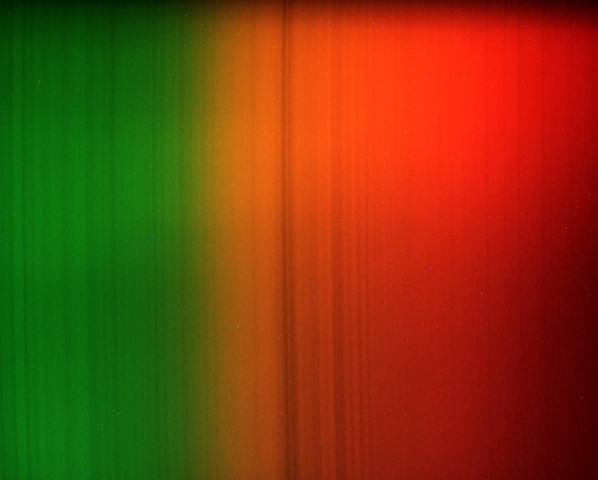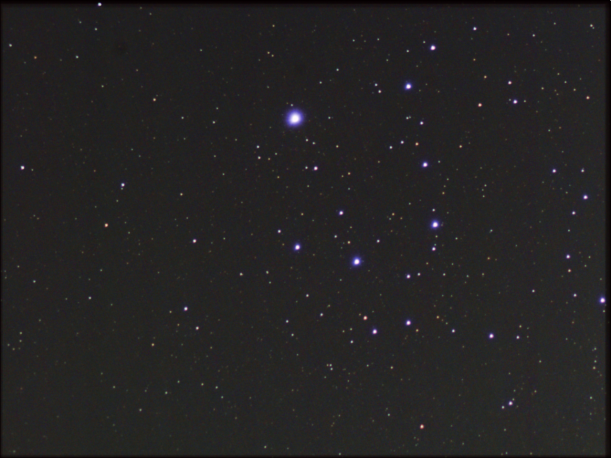Now that Fall is upon us here in North America it’s time to do some thinking about projects to pursue during the long Winter months ahead.
But first an update on the compact solar spectrograph (CSS)…finished up the painting, flat black for the interior and a rather unexciting gray for the exterior. Turned out pretty well on the hole…didn’t slop too much around. Finished the 1/4 -20 mounting hardware and got attached to a cheapy tripod bought off Amazon. Also, I added a light baffle between the entrance slit and the collimator lens to block any stray light from reaching the reflection grating directly (improves contrast). Just a black cardboard piece with a correctly sized hole fashioned in it. Here’s what it looks like today:
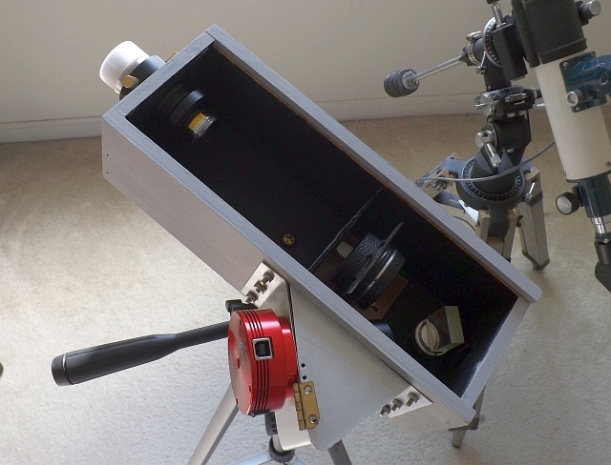

And a recent solar spectrogram…with a few dust spots which seem to have crept into the optics. On the right is the terrestrial Fraunhofer B diatomic oxygen band and the left Fraunhofer’s Hydrogen alpha C line.

So, at least for the moment this spectrograph came out as I expected and maybe a little better in regards to usability and performance. I have a few future hardware changes I’m considering, a resolution upgrade etc. but for now lacking necessary funds for this, I’m good.
Actually I’ve already begun the next project and have made some progress. The project? No surprise it’s another spectrograph! This time however I’m striving for even lighter overall weight, increased portability and higher light throughput efficiency. The application will be for imaging stellar objects from stars to nebula using the 80mm refractor I recently added. The prototype (Lowres Compact Stellar Spectrograph) will use an inexpensive transmission grating of 500 l/mm I purchased off of Amazon a few weeks back.The body of the instrument is using an adapter designed for a Nikon DSLR/SLR Camera to 1.25″ telescope focuser. Removing the camera T-ring permits connecting a M42 .75 equipped ZWO camera.
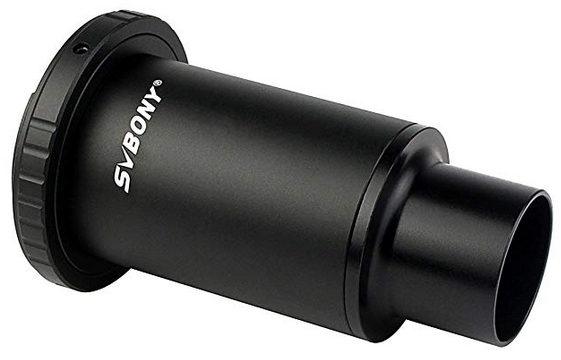
The 1.25″ barrel (also M42 .75 threaded) unscrews and is ideal for incorporating an entrance slit. In the demonstration version a sleeve slide- in with a set of razor blades.
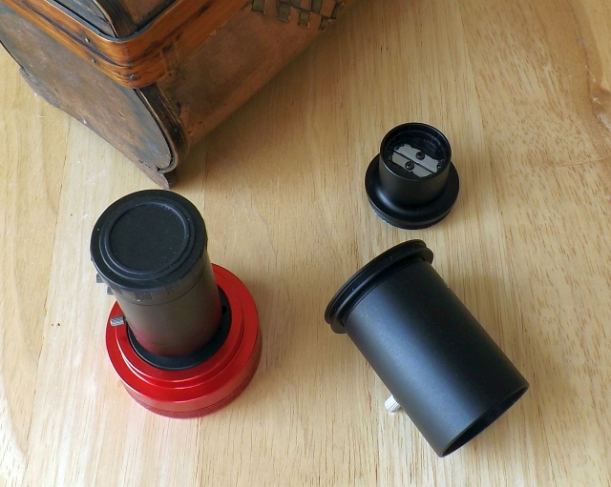


So it looks like for the foreseeable future spectroscopy and revisiting lunar imaging will continue during the time ahead. Besides putting together the LRCSS I’ve been looking at a different imaging/analysis program specifically designed for spectroscopy, that being RSpec from Tom Fields. There’s a 30 day evaluation version available for a good look see. Below shows RSpec’s interface with the above spectrogram loaded and it’s calibrated profile obtained with just a few clicks of the mouse…
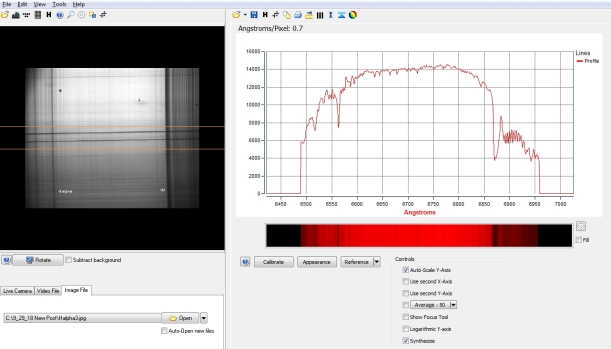

Clear skies!













